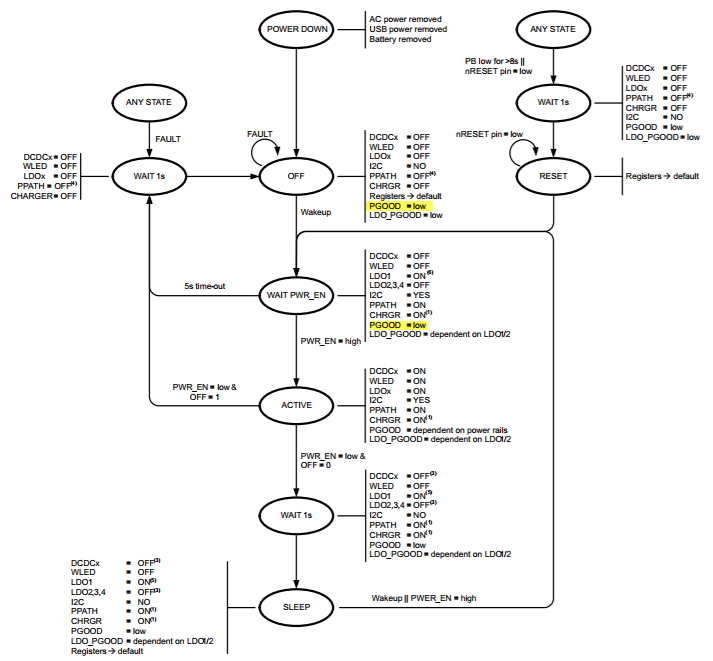Team,
One of my customers noticed that their TPS65217 PGOOD is HIGH when in the OFF state (battery connected but before wakeup event) on both their board and our EVM. It should be LOW in this case per the datasheet state diagram. Any ideas what can be causing this?
- PGOOD is HIGH in the OFF state when battery is used
- When power is applied to USB input instead of BATT, LDO1 turns ON in the OFF state. This was tested on the eval board setup in the default configuration, connected to the USB-serial module, which was unplugged and plugged back in before powering on. PGOOD is HIGH when USB input is used
- AC input has identical behavior to USB input
I believe the LDO1 turning on is because USB/AC count as wakeup events, but PGOOD should remain LOW either way. Please let me know your thoughts.
Thanks,
Antonio


